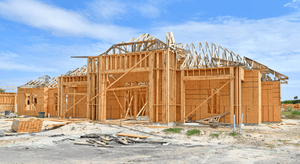When buying a Home in Metro Atlanta and completing a HUD 203(k) Renovation Loan Program is generally like any other mortgage program, there are guidelines and steps to follow to complete the loan process.
The only difference between a standard conventional loan and a HUD 203(k) loan is that the HUD 203(K) Loan Program has a renovation component which increases the overall loan amount and requires additional documentation. If you follow these steps it will make the loan and renovation process less stressful and smoother.
Application Process
When buying a home in Metro Atlanta and using a HUD 203(k) Renovation Loan Program the step-by-step application/mortgage process discussed who is involved and what there roles are and what is required to complete the loan. Specific people involved in this process are:
1. HUD
2. Realtor®
3. Mortgage lender
4. Contractors
5. Borrower
6. Consultant
7. Plan reviewer
8. Appraiser
9. Inspector
Select a Mortgage Lender
Find a mortgage lender that can complete and has completed the Hud 203(k) is essential. Not all lenders can or know how to complete this type of loan. The best ways to find the required lender is to ask mortgage lenders you know, your Realtor®, or go to HUD.gov and find a lender in your area.
Get Preapproved
Once you have selected your mortgage broker get preapproved. Some document that will be required for a preapproval could be:
1. Last two years of tax returns
2. Current bank statements for checking and savings accounts
3. W-2’s and pay stubs
4. Copies of all investment (IRA, stocks, savings bonds etc.)
This is generally the short list of required documents to get a preapproved
During this time ask as many questions as you can about the HUD 203(k) Renovation Loan Program so you can become familiar with this program but these questions provided a gauge on how knowledgable the mortgage lender is. If you still have questions you can go to HUD.GOV for more information or HUD 203(k) Renovation Loan Program overview
Go Look at Houses
This is the fun part. Go look at houses with you Realtor® and find one you like.
Complete a Market/Renovation Analysis
After finding a Metro Atlanta home, you and your real estate agent will complete a market/renovation analysis on that home. The market/renovation analysis should include the current market pricing and:
• What extent of renovation work is required;
• Cost estimate of the work (estimate)
• The expected after renovation market value of the property after completion of the work.
Note: When buying a Home in Metro Atlanta, if you and your Realtor® deem that the after renovation value is less that the purchase
price, plus the cost of improvements – no action on the property should take place. Basically move on and find another home.
Finalize the Sales Contract
Once the preliminary analysis is complete and the home meets expected criteria of the HUD 203(k) Renovation Loan Program, a sales contract should be drafted. Before you finalize the sales contract make sure there is a statement in the contract that says, “The buyer has applied for Section 203(k) financing, and that the contract in contingent upon approval and buyer’s acceptance of additional required improvement as determined by HUD or the lender.”
Prepare Estimate of Renovations and Costs
This is an estimate of all work that needs to be completed and the costs of that work. This is done by a certified HUD contractor.
Mortgage Lender Requests a HUD Case Number and Vendors
After the acceptance of the architectural exhibits (if required) and the estimate for renovations and cost, the HUD 203(k) Renovation Loan Program lender will request
• The assignment of a HUD case number
• Plan reviewer
• Hud appraiser
• Hud inspector
Fee Consultant Visits Property
The homebuyer and contractor (where applicable) meet with the fee consultant to ensure the architectural exhibits are deemed acceptable and all program requirements have been properly shown on the exhibits.
Appraiser Performs Appraisal
Depending on the lender, their guidelines, and scope of work, the might be one appraisal or two. The appraiser will appraise for after-renovation value and if possibly As-Is value.
Lender Reviews Appraisal and Application
Once the appraisal in completed, the lender will review the appraisal and application to determine what the maximum mortgage amount for the property will be.
Completing Loan Commitment
• Draft a Conditional Commitment Letter
This document is issued by the HUD 203(k) Renovation Loan Program lender and
establishes the maximum mortgage amount for the property.
• Lender Prepares Commitment Package
The buyer finalizes all documentation that the HUD 203(k) Renovation Loan Program
lender requested. Some of this documentation will have already been submitted during
the preapproval process but other items that might be requested could include:
o Credit report
o Verification of employment and deposits
o Any other source documents needed to establish the ability of the borrower to repay the mortgage.
• Lender Issues Commitment Letter
If the application and all documentation is found acceptable, the commitment letter is issued to the borrower. It states the maximum mortgage amount that HUD will insure for the borrower and the property.
Loan Closing
After the commitment letter has been issued, the HUD 203(k) Renovations Loan Program lender prepares for the closing of the mortgage. This includes the preparation of:
• The Rehabilitation Loan Agreement- This agreement is signed by the borrow and lender and established the conditions that the lender will release funds from the Rehabilitation Escrow Account.
• Following closing, the borrower makes mortgage payments on the entire amount for the mortgage and Rehabilitation Escrow Account even though it has not yet been disbursed.
Mortgage Insurance
Following closing, the lender will submit copies of the mortgage documents to the HUD office for mortgage insurance endorsement. HUD will review all mortgage document and then issue a Mortgage Insurance Certificate to the lender
Establishing Rehabilitation Escrow/Construction Begins
At closing the Rehabilitation Escrow is established and once that is complete construction may begin. The homeowner has up to six (6) months to complete the work. (Lenders may require less than six months.)
Releases of Funds from Rehabilitation Escrow Account
As the construction progressed funds will be released in the form of a draw. The maximum number of draws for this loan type is five the last one being the final inspection. The funds requested for each draw will only be released after the work has been inspected a approved Hud inspector. The inspector will review the Draw Request (HUD Form-9746-A) that is prepared by the borrower and contractor.
Completion of Work/Final Inspection
When all work has been completed, the buyer will provide a letter stating all work is complete and ready for a final inspection. If the HUD approved inspector agree the final draw is released minus a required 10 percent holdback. Any unused funds the lender must apply it to the principle of the loan.
When buying a home in Metro Atlanta think about the HUD 203(k) Renovation Loan program as an option to get a great home and renovate it to your needs.








